A Cod is any of three species in the taxonomic genus Gadus. The Atlantic, Pacific, and Greenland Cod make up the group. The Atlantic and Pacific species in particular have important commercial value.
Gadus also contains a fourth species that people do not refer to as a “Cod,” the Alaska pollock. Read on to learn about the Cod.
Description of the Cod
This fish has a torpedo-shaped body with a somewhat pot-bellied appearance. Their scales typically have dull coloration ranging from deep green to silver or grey. The scales on the upper side of their bodies have darker coloration than their underbellies.
Though size varies from species to species, most fish measure between 2 and 4 ft. long. The heavier species reach about 88 lbs., though some weigh closer to 30 lbs.
Interesting Facts About the Cod
People consider these fish an important commercial species. Learn more about what makes them unique, below.
- Record Holder – The largest recorded member of Gadus measured 6 ft. long and weighed over 200 lbs. This unusually large specimen came from the Atlantic population.
- Cod Collapse – Overfishing of some populations of Gadus have resulted in severe decline in the past. In some areas, populations dwindled to seriously low numbers, and have yet to recover.
- Unique Features – You can differentiate these fish from other species by looking at their dorsal fins on their backs. All three species have three separate dorsal fins from the middle of their backs to the base of their tails.
- Shoal Scout – These social fish live in large groups known as shoals, or schools. Within the schools, larger individuals have higher places on the social hierarchy. The largest fish serve as scouts for the shoal and lead the rest of the fish.
Habitat of the Cod
The different species in this group live in similar habitat types. They occupy saltwater habitats, and prefer benthic habitats, or habitats near the sea floor. You can also find some species in brackish water, or mixed salt and freshwater. They prefer coastal habitats relatively close to shore, though they do range into waters as deep as several thousand feet beneath the surface.
Distribution of the Cod
Each of the three species has a different range. The Atlantic species lives in the Atlantic Ocean, and ranges from the northeast coast of North America to Greenland and across to Europe and western Russia.
As you might guess, the Pacific species occupies the Pacific Ocean, primarily the northwest. Finally, the Greenland species lives near the coast of Greenland and northern Canada.
Diet of the Cod
These fish have carnivorous feeding habits, which means that they prey on other animals. As opportunistic hunters, they eat virtually anything that they can catch and swallow. Younger fish feed on plankton, shrimp, and other small creatures. Adults hunt for small fish, squid, worms, and a variety of invertebrates.
Cod and Human Interaction
Humans utilize all three species as a source of food. They are commercially important fish, and the fisheries in many areas rely heavily upon these fish. People commonly eat this fish, and also use its liver in the production of cod liver oil.
Unfortunately, fishing pressure has historically resulted in severe population declines in these fish. The IUCN currently lists the Atlantic species as Vulnerable, and has not assessed the other species.
Domestication
Humans have not domesticated this fish in any way.
Does the Cod Make a Good Pet
No, you would not want to keep any of the three species as a pet. They live in saltwater habitats and reach quite large sizes. For this reason, housing them is time consuming and requires a large, extensive saltwater tank setup.
Cod Care
Many aquariums house these fish to educate the public on the dangers of overfishing and teach guests about regulation of commercial fisheries. Programs like Monterey Bay Aquarium’s Seafood Watch, teach guests how to make informed decisions when purchasing seafood.
Aquariums house the fish in massive saltwater tanks, often with a variety of other species alongside the schools of Cod. They feed the fish smelt, capelin, squid, and a variety of other aquatic prey.
Behavior of the Cod
These social fish live in groups known as schools or shoals. The schools move long distances, undergoing migrations in response to prey movement, water temperature, and breeding. Within the school, these fish form dominance hierarchies based on size. The larger fish have more dominant behavior, and retain rights to better food and mates.
Reproduction of the Cod
During the breeding season, these fish utilize complex breeding strategies that researchers do not fully understand. Scientists believe that they use sound production, in the form of drumming, to select their mates. Females release batches of eggs, and the male fertilizes those eggs.
Once fertilized, the eggs drift away, hatching after two or three weeks into larval fish. Some fish mature faster than others, depending on their sex, species, and where they live. Populations mature at less than two years in some cases and more the six years in others.


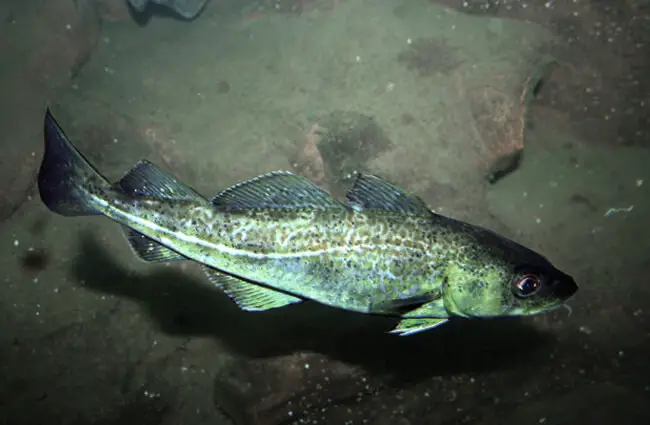
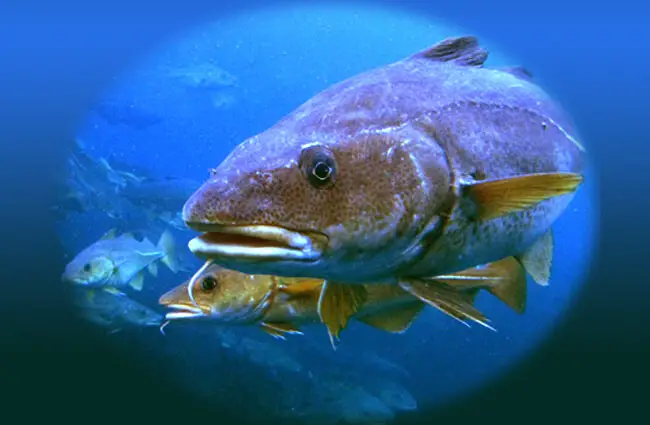
![Fisherman showing off his catch Fisherman showing off his catch, cod Photo by: David Csepp, NMFS/AKFSC/ABL [Public domain]](https://animals.net/wp-content/uploads/2020/01/Cod-5-650x425.jpg)
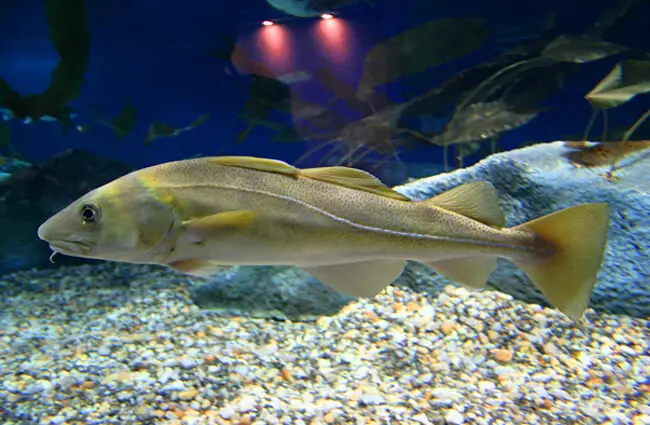


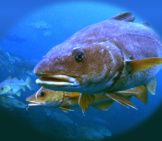
![Fisherman showing off his catch Fisherman Showing Off His Catch, Cod Photo By: David Csepp, Nmfs/Akfsc/Abl [Public Domain]](https://animals.net/wp-content/uploads/2020/01/Cod-5-162x141.jpg)
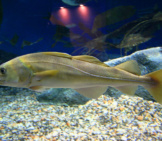
![Red Angus Closeup of a beautiful Red Angus cowPhoto by: U.S. Department of Agriculture [pubic domain]https://creativecommons.org/licenses/by/2.0/](https://animals.net/wp-content/uploads/2020/03/Red-Angus-4-238x178.jpg)












![Red Angus Closeup of a beautiful Red Angus cowPhoto by: U.S. Department of Agriculture [pubic domain]https://creativecommons.org/licenses/by/2.0/](https://animals.net/wp-content/uploads/2020/03/Red-Angus-4-100x75.jpg)

